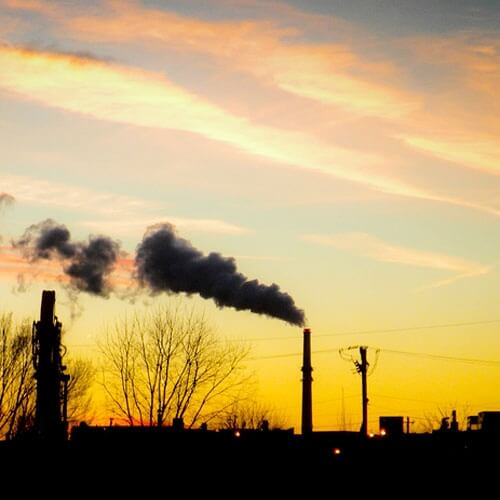News
(Photo courtesy of Flickr user vxla.)
The following article by Sara Peach appeared July 6, 2012, in Chemical & Engineering News.
Sulfur dioxide emissions fell by 24% between 2008 and 2009 in the U.S., according to the Energy Information Administration (EIA). Now researchers think they know why: Spurred by a drop in natural gas prices, utilities shut down old coal plants that lacked pollution controls (Environ. Sci. Technol., DOI: 10.1021/es301023c).
Coal- and oil-burning power plants produce most of the U.S. emissions of SO2, an air pollutant linked to respiratory illnesses and the formation of acid rain. The Clean Air Act of 1990 requires utilities to gradually reduce SO2 emissions. But when SO2 emissions from power plants fell dramatically, researchers at Harvard University and the Chinese Academy of Sciences wondered what economic forces influenced the drop.
The researchers obtained data on fuel consumption, electricity generation, and SO2 emissions from EIA and the Environmental Protection Agency. Using a standard statistical method called the Logarithmic Mean Divisia Index, the researchers calculated the relative importance of factors in the emissions drop.
The researchers found that the economic recession’s decrease in electricity demand caused 15% of the decline in emissions.
They also calculated that a fall in natural gas prices played a role. Between 2008 and 2009, the average price that utilities paid for natural gas dropped from $9.26 to $4.93 per thousand cubic feet, according to EIA. When prices fell, many utilities switched from burning coal, which is rich in sulfur, to sulfur-free natural gas. The switch alone accounted for 28% of the reduction in SO2 emissions.
To their surprise, the researchers found that the largest contributor to the emissions drop was an overall decline in SO2 emissions from the coal-fired plants that remained in operation, says study author Michael B. McElroy, of Harvard.
The plants that continued burning coal, McElroy explains, tended to be newer, more-efficient plants that used sulfur-removing equipment. Utilities also installed sulfur scrubbers at 57 plants between 2008 and 2009. The combination of the scrubbers and the mothballing of old plants accounted for close to 57% of the overall decline in SO2 emissions.
Topics: Environment, Climate
Cutting-edge science delivered direct to your inbox.
Join the Harvard SEAS mailing list.
Scientist Profiles
Michael B. McElroy
Gilbert Butler Professor of Environmental Studies




